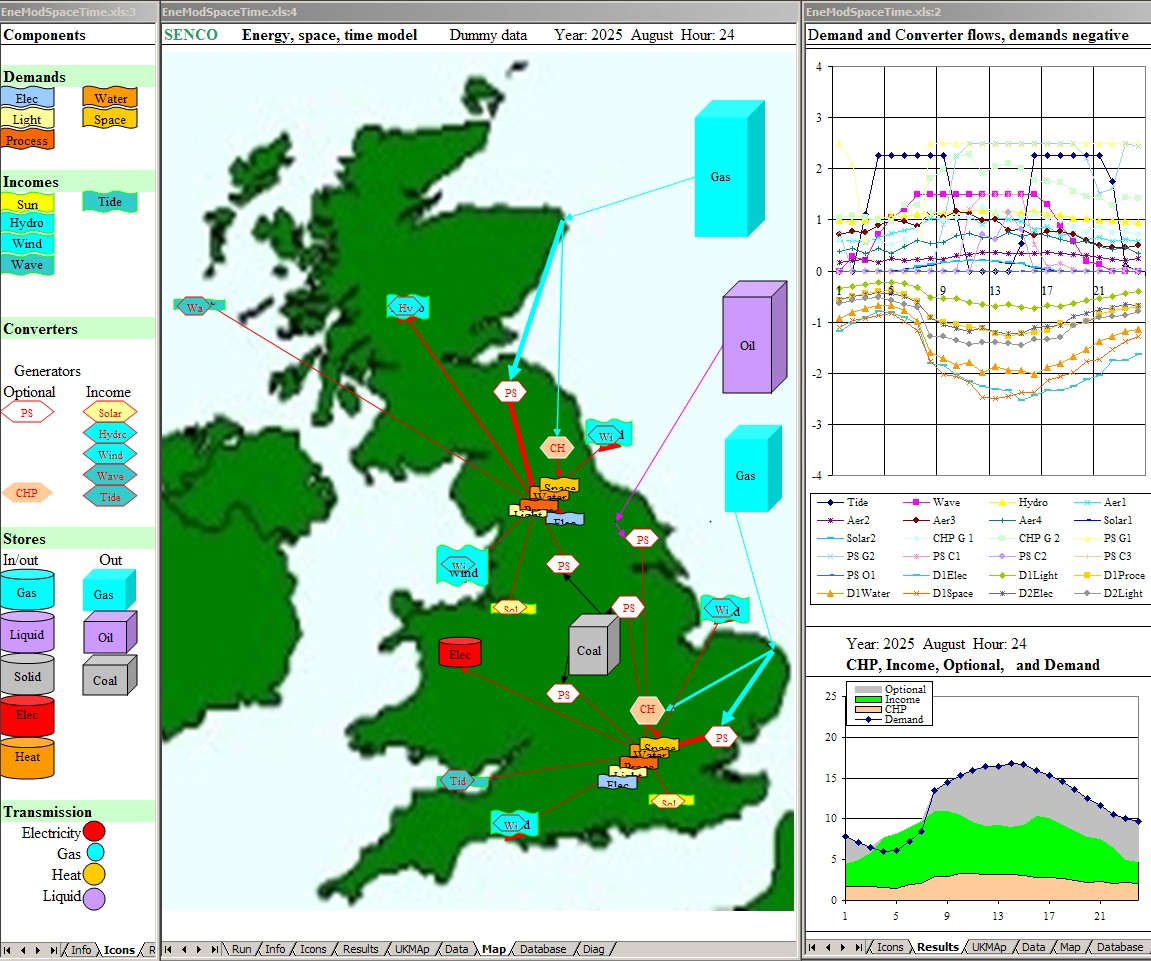- Home
- Education
- Publications
- Presentations
- Paper
Energy-Space-Time model
This is a preliminary model designed to promote understanding of the issues involved with future energy systems, and to assess the feasibility of full model development. It builds on ideas in the trade model, the main additions being the incorporation of storage and more detail of demand and income energy.
A PowerPoint presentation of a scenario integrating of variable renewable and CHP electricity sources into the UK electricity system may be found here.
A video of the model working can be downloaded here (1 Mb, AVI wmv9I) or here (1 Mb, gif). The simulation illustrates the issues that will arise if renewable and CHP electricity become a large fraction of total supply. The residual demand to be met from other sources will be very variable and not suited to high capital cost, slow reponse nuclear and coal plant. Storage and demand management will become more important. Renewable electricity (apart from solar) will increase electricity transmission needs, whereas CHP will reduce them. The EleServe model analyses the problem of matching time varying demand with supply in more detail.
The energy system comprises these elements: energy service needs (space heating, lighting, etc.) or demands, end use energy converters (boilers, light bulbs, etc), renewable/income energy sources (sun, wind, wave, tide, etc.), energy supply converters, stores of fossil and nuclear energy and artificial stores like pumped storage, and energy transmission.
The demands for energy vary spatially and temporally according to weather and social patterns. Renewable or income sources of energy also vary spatially and temporally. Energy supply converters, like power stations, transform fossil and income energy into useful energy forms and this is transmitted to users. Stores are used to balance temporary excesses and deficits of energy that arise because of variations in demands and income sources.
The objective is to meet energy service needs with the best combination of these components in terms of capacities and locations. The model simulates the operation of the energy system over different time periods (e.g. hourly). To the degree that is practically feasible, optimisation over variables such as component capacities and locations, and real time operational control (e.g. of storage), will enable the least cost configuration and operational regime of the system that meets environmental and other objectives to be found.
The system shown here is for the UK, but the UK is connected to other countries with pipelines and electricity cables and the advantages of achieving further diversity through longer distance transmission should not be ignored.
